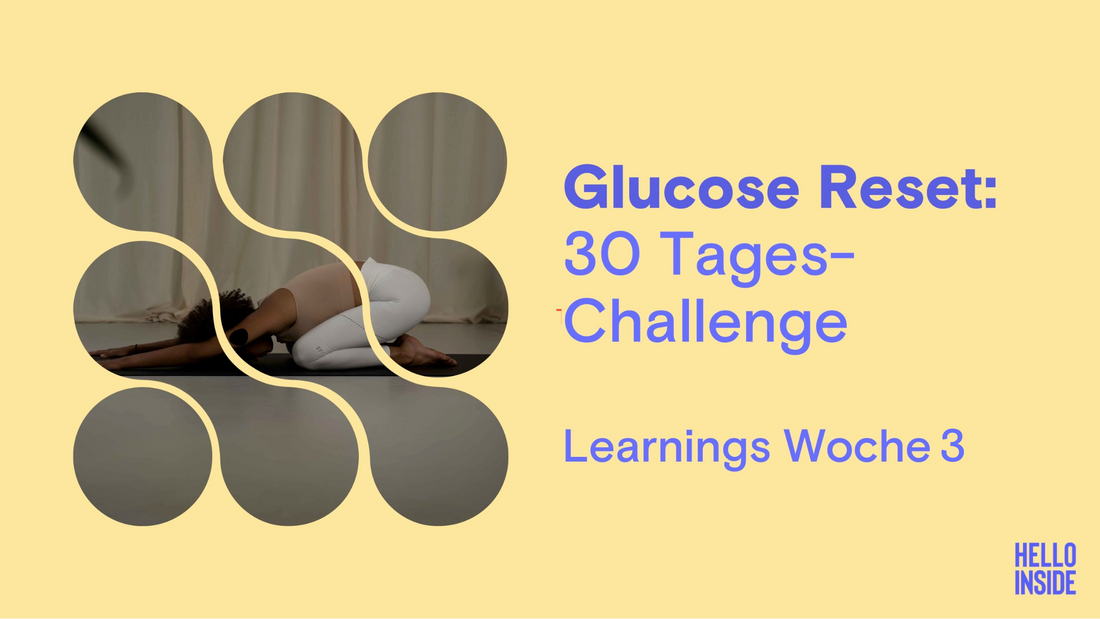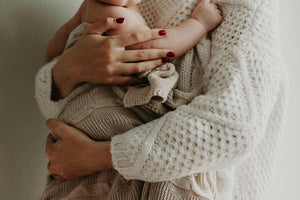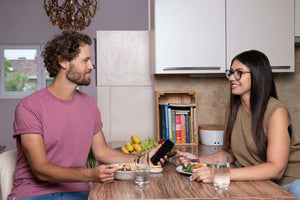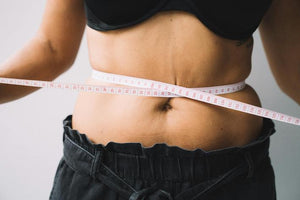The third week of our January challenge was particularly exciting: Many participants worked intensively on stabilizing their blood sugar levels and gained important insights into the connections between meals, exercise, and individual factors such as the cycle. In this report, we take a look at the various experiences, the week's blood sugar curves, and the scientific explanations behind them.
🍽️x👟: What the week has shown us🕵️
One of the main topics was how exercise after a meal affects blood sugar—and why the response isn't always clear. Participants like Klara (not her real name) and Sophie (not her real name) shared their blood sugar curves and demonstrated how different meals and types of exercise can have different effects. It became clear that the relationships are often complex and influenced by multiple factors.
Example 1: 🍔x🍟x👟Klara's walk after burger and fries - blood sugar had a double spike, what was going on?
Klara reported that her blood sugar spike was unusually slow after eating a burger and fries, even though she had taken a 45-minute walk. What was going on? Why was there a second spike after the walk?
💡 Explanation: Fatty meals like burgers and fries slow down digestion because the fatty meals stay in the stomach longer, delaying the carbohydrates from reaching the intestines in small portions, where they can be absorbed into the bloodstream. This prolongs the rise. In general, exercise can speed up digestion, but often does not prevent the delay caused by fat. In addition, a brisk walk could have stimulated the release of glucose from the liver's glycogen stores if the body perceives the exercise as a strain. This combination makes it difficult to definitively determine the cause of the rise. In principle, an increase due to exercise is not to be seen as critical - but this knowledge helps to analyze blood sugar curves more judiciously. During a normal walk, the second peak is therefore more likely to be due to a late-released second wave of carbohydrates from the fries, since the first peak could probably be due to the burger buns.
Example 2: 🥦x🍗x👟Mia experiences a slight increase after a balanced meal - how can this curve be explained?
Mia combined whole-wheat pasta with vegetables and lean chicken. After a 20-minute walk, her blood sugar remained stable with only a slight increase.
Explanation: This meal contained slow-digesting carbohydrates and plenty of fiber, which cause a moderate rise in blood sugar. The walk enhanced this effect by allowing the muscles to efficiently utilize the glucose before it could spike. Here, the effect was clearly visible—in contrast to fatty or more complex meals.
🤔Why the connection is not always clear
Blood sugar responses to exercise and meals depend on many factors, making interpretation difficult. Some participants reported curves that varied even with similar meal and exercise routines. But why?
1. The composition of the meal
-
Fast carbohydrates (e.g., white bread, rice) cause blood sugar to rise quickly. Exercise can be very effective in this regard, as the muscles can absorb glucose directly from the blood, thus neutralizing the spike.
-
Fatty meals, on the other hand, slow digestion, leading to a delayed rise. When combined with exercise, it's difficult to determine whether the digestive delay or the exercise had the greater impact.
2. The influence of hormones
-
Hormonal fluctuations , such as those caused by the menstrual cycle, play a major role. During the luteal phase (after ovulation), hormones like progesterone increase insulin resistance, making blood sugar responses more difficult to predict.
-
Estrogen during the follicular phase (before ovulation), on the other hand, promotes insulin sensitivity, which can lead to more stable values. These hormonal influences make the analysis complex, especially when combined with meals and exercise.
3. Intensity and timing of movement
-
Gentle exercise , such as walking, can often help prevent spikes.
-
However, more intense exercise (e.g., brisk walking with an incline or jogging) can mobilize additional glucose from the liver through the release of stress hormones such as cortisol. This can cause blood sugar to rise despite exercise, but this is not a bad thing in this context, as the positive effects of exercise more than compensate for a temporarily greater increase in blood sugar in healthy people.
4. Individual factors
-
Factors such as sleep, stress, metabolic rate, and even the time of day influence how blood sugar responds to meals and exercise. Participants with higher stress levels reported more unpredictable spikes.
💡 What does your blood sugar curve look like depending on your meal and exercise?
|
Have a good meal |
➕ Movement after |
🟰 Blood sugar reaction |
|
🍝 White bread or pasta |
➕ Easy walk |
🟰 Smoothing the peak, as glucose quickly enters the blood and is used up directly by muscle movement. |
|
🍔 Burger with fries |
➕ Easy walk |
🟰 Double spike: The first portion of fast carbohydrates goes directly into the bloodstream. The second spike occurs later, as the carbohydrates embedded in fat are released more slowly. Exercise lowers blood sugar between the spikes. |
|
🍕 Pizza or lasagna |
➕ Brisk walk |
🟰 Delayed rise: The fat content delays digestion, and glucose is released slowly. Brisk exercise can trigger additional glucose release from the liver through stress hormones. |
|
🥗 Salad with chicken |
➕ Easy walk |
🟰 Very stable: The combination of protein, fat and fiber ensures a balanced curve without any significant peaks. |
|
🍞 Wholemeal bread with egg |
➕ Moderate exercise |
🟰 Minimal rise: The complex carbohydrates are digested slowly, and the exercise helps to counteract the rise directly. |
|
🏃🏽♀️ Jogging in the morning |
🟰 Jogging on an empty stomach triggers the release of glucose from the liver and this can be similar to a spike after a less than optimal breakfast. |
These 3 tips will help you better interpret blood sugar curves
-
🍟Watch your meal: High-fat or highly processed foods can slow your blood sugar curve. Pay attention to how you combine these foods with fiber and protein.
-
🏃♂️Consider exercise: Not all types of exercise work the same. Observe whether a gentle walk or intense exercise produces different results for you.
-
😎Don't let outliers stress you out: Some spikes are normal and can be influenced by many factors, such as stress, sleep, or even hormones. View the curves as a learning process. 😊
Conclusion: Why reading blood sugar curves requires patience
The third week of the January Challenge has shown that blood sugar curves are often influenced by multiple factors working in combination. Exercise is undoubtedly a powerful tool, but its effect depends heavily on the meal, hormones, and individual responses. Especially with complex meals containing fat or during hormonally sensitive phases like the luteal phase, it can be difficult to identify clear causal relationships.
It was a fascinating experience for all participants to observe these influences and adapt their strategies. The key is to recognize patterns, be patient, and continue experimenting. 💡We're looking forward to week 4 of the challenge with you!




